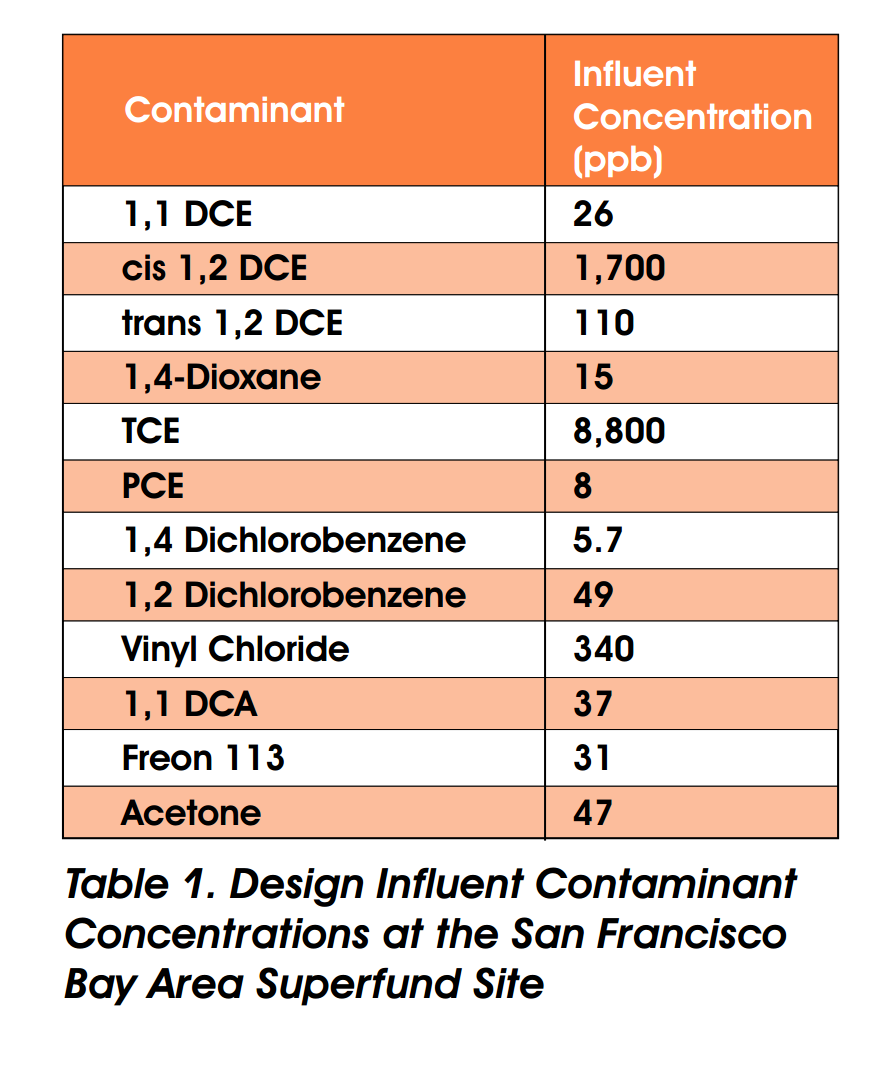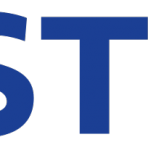1-4 Dioxane Treatment in Mountain View, Calif.
Mountain View, Calif. 1 July 2004 — As the consultant for a Fortune 500 semiconductor company at the San Francisco Bay Area Superfund site, Locus Technologies was facing a number of challenges. In 2003, the California Regional Water Quality Control Board requested that the effluent of all treatment facilities within the Superfund site be sampled for 1,4-dioxane. Data obtained during these tests indicated that 1,4-dioxane was present in the effluent at levels of 15 ppb, whereas the statutory discharge limit for 1,4-dioxane was 5 ppb. Additionally, local residents had raised concerns that airborne volatile organic compounds (VOCs) should not be discharged into the atmosphere. Based on these issues, Locus’s client desire to replace its existing air stripping/vapor carbon/aqueous carbon polishing treatmrnt technolgy with an innovative treatment technology that would:
- Remove or destroy VOCs and 1,4-dioxane
- Provide cost-efficient treatment
- Be easily expandable in the future
- Be able to meet projected EPA discharge requirements
The design flow rate for the treatment system was 50 gpm. Influent groundwater concentrations had a significant bearing on both the capital and the operation and maintenance (O&M) costs for the required treatment technology. The design influent concentrations are shown in Table 1.
During the early stages of the design process, Locus personnel brought a mobile advanced ozone/peroxide pilot treatment facility known as ozone peroxide, to the site. The engineers also ran a series of performance tests on the actual groundwater. Meanwhile, groundwater samples were sent to various UV/peroxide manufacturers and equipment suppliers so as to obtain process design requirements, capital price quotations and O&M cost for each of the various process treatment systems being considered.
Based on data from pilot studies, treatability studies and evaluations using carbon isotherms, each of the equipment suppliers was able to provide lump sum capital and guaranteed O&M costs for the influent groundwater specified (see Table 1). The scope of services specified for this treatment project were quite specific and required forfeiture of equipment costs should the treatment process not meet the discharge requirements and/or the O&M costs exceed those values provided. Plugging the design groundwater specified into its equations the manufacturers provided equipment capital cost pricing and annual O&M cost. Locus presented its findings in a Basis of Design Report that determined the construction cost and 15-year total present value for each system. Based on the strength of both pilot study results and guaranteed capital and O&M costs, the client chose to proceed with the ozone perioxide system.
Locus proceeded to order the specified equipment and begin construction. Following installation of the equipment, the manufacturers started and operated the treatment system for a period of one week. During that time, the company’s personnel carried out a detailed performance test to verify the destruction efficiency of the process and calculate the actual cost to operate the system. After completing the test phase, the manufacturer provided filed training for the Locus O&M staff.
Locus personnel discovered satisfactorily that the ozone peroxide system completely destroyed 1,4-dioxane without producing measurable air emissions. The fully automated system utilized multiple ozone injection points that increased treatment efficiency. Ozone was injected at high pressure to improve its solubility and thus reduce operational costs. The system could be easily expanded to accommodate changes in flow rates or contaminant concentration. costs to operate the system were very definable and reliable.
The ozone peroxide system has operated flawlessly since it was commissioned in December 2003 and maintained consistent effluent results. Furthermore, the O&M costs have remained below those values that were guaranteed in the original equipment proposal.
For more information about the remediation of 1,4-dioxane and the use of the treatment system at the San Francisco Bay Area Superfund Site, visit www.locustec.com.



